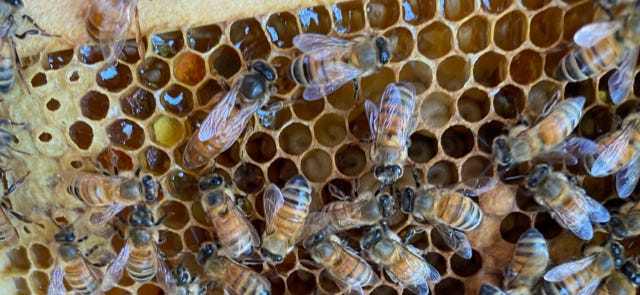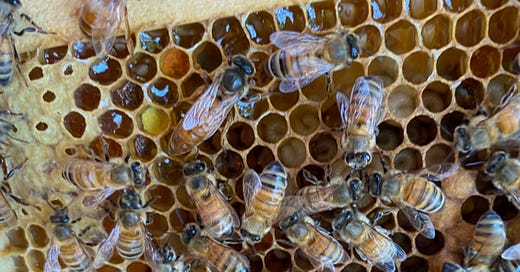Royal jelly: How it can work for you
Research on this special substance made by honey bees shows many health and wellness opportunities.
Honey is often the first thing people think of when they hear about honey bees. It’s part of their name, of course. Honey bees also create royal jelly, but not on the same abundant scale as honey. Royal jelly is an incredibly nutrient-rich, high-protein substance that honey bees produce to feed all of the brood (baby bees) as well as the queen. It’s deposited in the cell around when the egg hatches. All honey bees—workers (females) and drones (males)—feed on royal jelly for the first 3 days of their lives. The reason a worker bee develops into a queen is because the colony chooses to feed her royal jelly her entire life. The royal jelly allows the queen to grow into her full physiological potential. Essentially, every worker had the potential to be a queen if she had been fed royal jelly her entire life.

How royal jelly is harvested
Since the timing of royal jelly production and placement in the hive is dependent on brood presence, and it’s generally present in a cell with bee brood, it’s not extracted centrifugally like honey. Royal jelly is harvested carefully with a pipette. Considering a queen lays about 2,000 eggs per day depending on the season, and the jelly is present during the first 3 days after hatching for all bees, there’s potential for harvest from approximately 6,000 cells at once—however, that would be an extreme stress on the colony and compromise the hive health and population. Royal jelly harvests could be managed by small collections from multiple colonies to help balance resource removal.
To increase royal jelly production, it’s also possible to put the colony into a state of queen production. A few ways of doing this include removing the queen via temporary “lodging” in a queen castle (separate hive to store queens) or splitting hives to encourage queen production. Both place the queenless colonies in a state of stress. For bee welfare, rotating the colonies producing the royal jelly could be more sustainable and prevent compromising honey bee development and hive longevity.
Royal jelly for every stage of life
With multiple B vitamins, anti-inflammatory properties, antioxidative effects, and antibiotic activity—royal jelly seems to position itself as the Swiss Army Knife of the hive.
Royal jelly supports all stages of natural aging: Physical, biological, and neurological. Research shows dermatological benefits, symptom management for women’s health, and prevention or delay of cognitive decline. With multiple B vitamins, anti-inflammatory properties, antioxidative effects, and antibiotic activity—royal jelly seems to position itself as the Swiss Army Knife of the hive.
Royal jelly is the #1 recommended therapy for menopausal issues.
Royal jelly shows promise in boosting collagen production, easing premenstrual symptoms (PMS), and in 2020, Gynecologic Endocrinology and Reproductive Medicine stated that royal jelly is the #1 recommended therapy for menopausal issues.
It helps the immune system, has components that support cardiovascular health, and its wound-healing benefits can help people at every age with skin injuries.
What to consider for your own royal jelly use
Although research projects reveal the myriads of royal jelly applications, little evidence supports if long-term, ongoing exposure maintains its efficacy. For example, studies show that echinacea’s immune support is most effective when used in the short term at the first symptoms of a cold—yet it can negatively impact the immune system when used daily over the long term. It remains to be seen if royal jelly consumption behaves similarly.
Another thing to consider is if someone has a known honey bee venom allergy. There have been instances of allergic reactions to royal jelly for individuals with a honey bee venom allergy. A simple blood test can show if someone has a venom allergy, however, one can develop an allergy at any time.
I’ve never tried royal jelly—topically or orally—and I haven’t tried harvesting any yet. It’s another area I’m looking forward to exploring.
Check out my on-demand, online class to learn more about how royal jelly and other hive products support women’s health.



